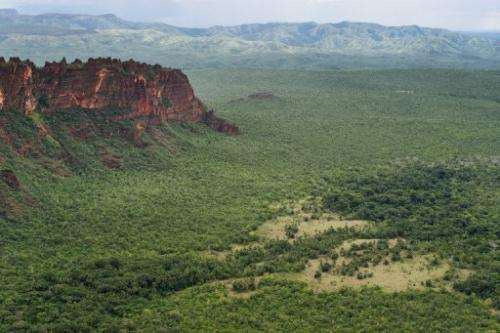View of the Chapada dos Guimaraes National Park in western Brazil on January 30, 2011. Deforestation has soared in the Brazilian Amazon since a new forestry code was passed last year at the urging of the agribusiness lobby, a non-profit environmental group said Thursday.
Deforestation has soared in the Brazilian Amazon since a new forestry code was passed last year at the urging of the agribusiness lobby, a non-profit environmental group said Thursday.
Between August 2012 and June 2013, 1,838 square kilometers (709 square miles) of forest were lost, a 103 percent hike over the same previous period, Institute Imazon said in its latest report.
The biggest losses since last August were in the northern state of Para and in the central-western state of Matto Grosso, it added.
The institute said deforestation in June totalled 184 square kilometers (71 square miles), up 437 percent over June last year.
The increased losses coincided with adoption of the new forestry code last year.
The law limits the use of land for farming and mandates that up to 80 percent of privately-owned land in the Amazon rainforest remain intact.
But it allows landowners to cultivate riverbanks and hillsides that were previously exempt, and eases restrictions for small landowners who face difficulties in recovering illegally cleared land.
More than 60 percent of Brazil's 8.5 million square kilometers (3.3 million square miles) are forests, but two-thirds of it is either privately owned or its ownership is undefined.
Environmentalists say the new legislation encourages deforestation.
"The forestry code sent a bad signal, that past deforestation is being excused and both Congress and the government are signaling that rules are less rigorous," Imazon investigator Adalberto Verissimo told the daily O Globo Thursday.
"The risk is to lose control once again over Amazon deforestation, which was decreasing," he added.
Provisional government figures, released on a monthly basis, showed deforestation rose about 30 percent in the 10 months until May.
Authorities normally release annual figures from the August to July period.
According to the latest official data, Brazil last year recorded its lowest level of Amazon deforestation, at 4,751 square kilometers (1,834 square miles), down 27 percent.
© 2013 AFP
























